117 posts
Latest Posts by t-sci-eng - Page 3




Concrete vs. Cement
Concrete and cement are (mostly) two different materials. Why mostly? Because concrete is made using cement. Though cement can (technically) be used on its own, concrete cannot be made without first making cement.
Classified as a ceramic, cement starts as a powder, a mixture of limestone and other minerals, which is heated and mixed with gypsum to form what we know of as cement. Still a powder in this form, once water is added and mixed the cement then hardens.
Portland cement, probably the most well known and commonly used cement, is classified as a hydraulic cement. This essentially means that once water has been added the chemical reaction, called hydration, that hardens the cement is not dependent on how much water is added. Hydraulic cements can harden underwater and remain strong even in wet conditions. As a side note, Portland cement is not a brand name, but a particular type of cement.
On the other hand, concrete is composed of cement, aggregate, and water, and is thus classified as a composite. Composites are defined as consisting of a matrix or binder that has a reinforcement within it. In the case of concrete, the cement water mixture is the matrix in which the reinforcement, or aggregate exists.
The aggregate is typically comprised of stones, rocks, and sand and its addition increases the durability of the concrete. The amount of the aggregate or the size of the aggregate added can also effect the water-to-cement ratio required to harden the material, strengthening the final product. The hardening process continues for years, meaning that concrete only gets stronger with age.
Though most concretes are lime-based, asphalt concrete uses asphalt as the cement material and polymer concretes also exist. Another common type of concrete is reinforced concrete, in which rebar, or reinforcing bars, are embedded within to add to the strength of the concrete.
Sources: ( 1 ) ( 2 ) ( 3 ) ( 4 ) ( 5 )

Due to the Mandela Effect, we remember things that didn’t happen or exist. Get the answer and why in our NEW VID: https://youtu.be/hvu4D1jngCY




Ceramics: Aluminum Nitride
First synthesized in the late 1800s, aluminum nitride’s potential wasn’t realized until a hundred years later in the late 1900s. AlN is a ceramic with high thermal conductivity but is an electrical insulator. It is classified as a covalent compound, the only stable compound in the binary Al-N system.
AlN is similar in properties to beryllium oxide (BeO), but is cheaper and has less of a potential to be toxic. In addition to the properties mentioned above, this ceramic also has high chemical resistance and exhibits piezoelectric properties.
Thanks to its thermal and electrical conductivity properties, AlN is useful in microelectronics. It is used in microelectronic packaging, surface acoustic wave sensors, in RF filters, as a crucible for the growth of gallium arsenide crystals, in piezoelectric MEMs applications, and many more. In addition, the wurtzite phase of aluminum nitride, w-AlN, is a wide band gap semiconductor material, with potential applications in deep ultraviolet optoelectronics.
Because AlN is a covalent compound, high pressures or sintering aids are required to assist densification during production. Typical additives include rare-earth or alkaline-earth oxides, such as yttrium compounds. The additives and sintering conditions used can alter the properties of commercially available grades of AlN.
Sources: ( 1 ) ( 2 - images 2 and 3 ) ( 3 - images 1 and 4 ) ( 4 )









PERIODIC SPONGE SURFACES AND UNIFORM SPONGE POLYHEDRA IN NATURE AND IN THE REALM OF THE THEORETICALLY IMAGINABLE
By Michael Burt- Prof emeritus, Technion, I.I.T. Haifa Israel
The diversity of shapes and forms which meets the eye is overwhelming. They shape our environment: physical, mental, intellectual. Theirs is a dynamic milieu; time induced transformation, flowing with the change of light, with the relative movement to the eye, with physical and biological transformation and the evolutionary development of the perceiving mind. “Our study of natural form “the essence of morphology”, is part of that wider science of form which deals with the forms assumed by nature under all aspects and conditions, and in a still wider sense, with forms which are theoretically imaginable ..(On Growth and Form D'Arcy Thompson), “Theoretically” to imply that we are dealing with causal- rational forms. “It is the business of logic to invent purely artificial structures of elements and relations. Sometimes one of these structures is close enough to a real situation to be allowed to represent it. And then, because the logic is so tightly drawn, we gain insight into the reality which was previously withheld from us” (C. Alexander). A particular interest should be focused on those structures which are shaped like solids or containers, with continuous two-manifold enveloping surfaces, enclosing a volume of space and thus subdividing the entire space into two complementary sub-spaces, sometimes referred to as interior and exterior, although telling which is which, is a relativistic notion. On each of these envelopes, topologically speaking, an infinite number of different maps composed of polygonal regions (faces), which are bounded by sets of edge segments and vertices, could be drawn, to represent what we call polyhedra, or polyhedral envelopes. We come to know them by various names and notations, evolving through many historical cultures up to our present times; each representing an individual figure-polyhedron, or a family, a group, a class or a domain; convex-finite, Platonic and Archimedean polyhedra; pyramids, prisms; anti-prisms; star polyhedra; deltahedra; zonohedra; saddle polyhedra, dihedral, polydigonal, toroidal, sponge like, finite and infinite polyhedra; regular, uniform, quasi-regular, and so forth; all inscribable in our 3-dimensional space. It is these structures and their extended derivatives which shape our physical-natural or artificial man-conceived environment and provide for our mental pictures of its architecture. The number of forms which had acquired a name or a specific notation through the ages is amounting to infinity, although the number of those which comprise our day to day formal vocabulary and design imagery is extremely (and regretfully) limited by comparison, even amongst designers and architects, whose profession, by definition, compels them to manipulate and articulate forms and space. Here it is right to observe that name-giving is part of the creative and generative process. The number of polyhedral forms which did not receive, as yet a proper name or a notation is also infinite. Infinite is also the number of potentially existing and possible imaginary periodic forms, not envisaged yet. Conspicuous are those relating to sponge-like labyrinthian, polyhedral, space dividing surfaces, which until quite recently were not even considered as a research topic. The interest in these forms has been prompted by our growing awareness of their abundance in nature and their importance, not only in describing micro and macro-physical and biological phenomena, but also in coping with morphological complexity and nature of our built environment and its emerging new architecture and the order and formal character of our living spaces, on either the building or the urban scale. Nature is saturated with sponge structures on every possible scale of physical-biological reality. The term was first adopted in biology: “Sponge: any member of the phylum Porifera, sessile aquatic animals, with single cavity in the body, with numerous pores. The fibrous skeleton of such an animal, remarkable for its power of sucking up water”. (Wordsworth dictionary). the entire study here
© Michael Burt- Prof emeritus, Technion, I.I.T. Haifa Israel
5 things you didn’t know about... Concorde

Credit: British Airways
1. Operated by British Airways and Air France, Concorde went into operation in 1976, following 5,000 hours of flight testing. Seating 100 passengers, it catered to the privileged or business traveller. Concorde was withdrawn from service in 2003, after 27 years.
2. The most popular route for the British carrier was from London Heathrow to New York JFK in just three hours and 20 minutes. Cruising at Mach 2.02, passengers experienced heights of 60,000ft, a vantage point from which they could see the curvature of the Earth below and dark skies above at midday.
3. The four Olympus 593 engines that powered Concorde were twin spool turbojets.
4. The materials used for Concorde’s structure needed to withstand temperature extremes – subsonic speeds, the aircraft fuselage would experience lows of -35°C, but at Mach 2 the temperature reached 127°C at the nose.
5. Concorde’s long, pointed nose cone played a key role in landing. Formed of resin-bonded glass fibre, as metals would interfere with the signals detecting storm clouds, the hydraulically powered nose cone could be moved independently to an angle of 12.5° on landing, allowing the pilot to see the approaching runway.
To find out more see page 60 of the June issue of Materials World or visit http://bit.ly/2qDPjJC.

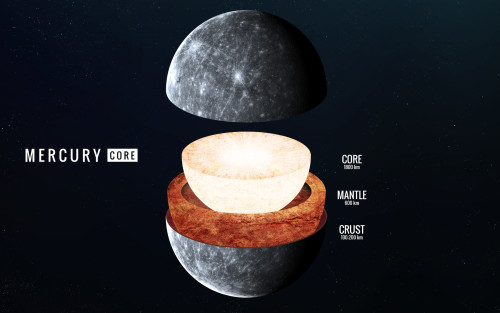
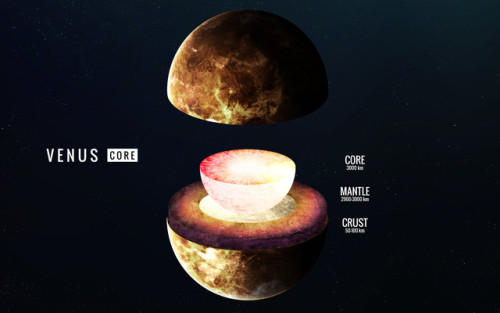

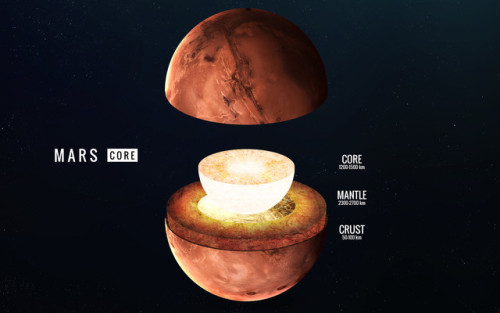
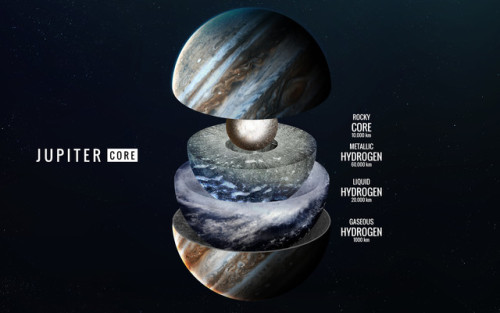
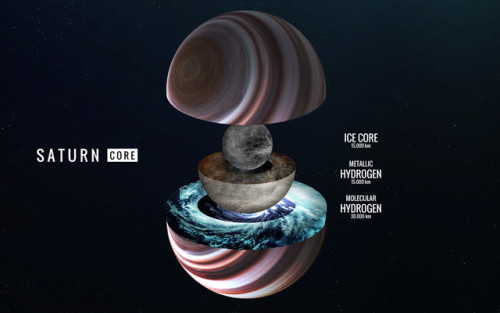
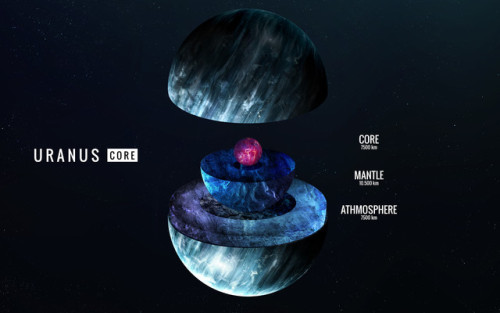
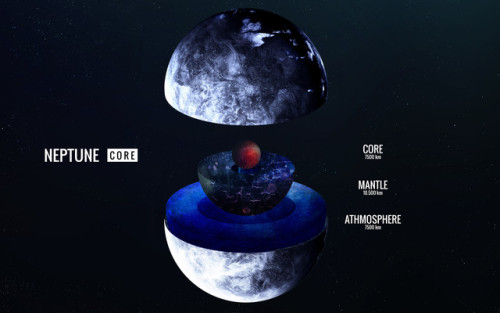
Inside - Vadim Sadovski
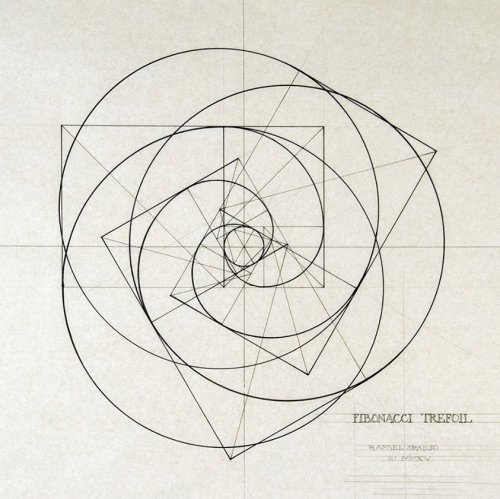
Fibonacci trefoil
© Rafael Araujo

Møbius donut.
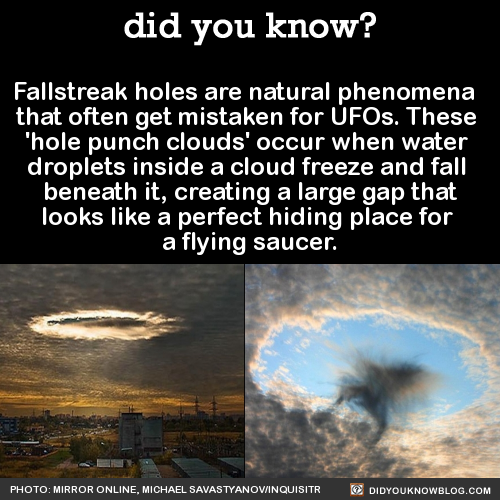
Fallstreak holes are natural phenomena that often get mistaken for UFOs. These ‘hole punch clouds’ occur when water droplets inside a cloud freeze and fall beneath it, creating a large gap that looks like a perfect hiding place for a flying saucer.



Aliens, obvi.

The rarity of fallstreak holes is what tends to throw people.

That paired with the tendency to look at anything in the sky and cry ‘UFO!’ is the perfect makings of a false alien alarm.

Sometimes these clouds have little rainbows inside.


They aren’t always circular, though…

They make all kinds of crazy shapes.

Including airplane/sword/cross/wieners.

Photos via: Rantplaces
Source
If I could catch a rainbow
If i could catch a rainbow,
I would just do it for you
And share with you it’s beauty,
On the days you are feeling Blue.
Rainbows are nature’s optical illusion.

It’s not possible unfortunately to catch a rainbow. They are not objects and are not located at specific distance from the observer that one can physically approach.
Rainbows stems from an optical illusion caused by any water droplets viewed from a certain angle relative to a light source.

They are user-specific and everyone sees a different rainbow.
The monochrome rainbow
Not all rainbows that occur in nature are multicolored. Under specific atmospheric conditions, one can spot the Mono-chrome rainbow i.e It has only one color.

PC : rodjonesphotography
Moonbows
A Moonbow / Lunar rainbow /White rainbow is a rainbow produced by light reflected off the surface of the moon (as opposed to direct sunlight) refracting off of moisture-laden clouds in the atmosphere / from waterfalls.

PC: GanMed64
Each of your eyes sees a different rainbow.
Just as no two people see exactly the same rainbow, even if they’re standing next to each other, the few inches between your eyes make a difference in what you are viewing.

There is no color- indigo ( sort of )
One can distinguish almost all colors in a rainbow but Indigo.
Legend has it that Newton included indigo because he felt that there should be seven rather than six colors in a rainbow due to his strong religious beliefs.

Origins of ‘Iris’
The Greeks and Romans thought a rainbow was the path made by Iris, the goddess of the rainbow, between heaven and earth, linking gods with humans. “Rainbow” in Latin is arcus iris or arcus pluvius, a “rainy arch”.

The iris of the eye is named after her, because of its colour.
The Greeks used the word “iris” to describe any coloured circle, such as the “eye” of a peacock’s tail. The flower called iris gets its name from the Greek, as does the chemical iridium (Ir), compounds of which are highly coloured. Iris is also the root of “iridescent”.
Pulsating Rainbows
Place a linear polarizer over the camera whilst capturing a rainbow and you get pulsating rainbows.

Source
Double Rainbows/ Multiple Rainbows
A double rainbow is a phenomenon in which two rainbows appear. They are caused by a double reflection of sunlight inside the raindrops. Similarly multiple rainbows are a possibility as well.
Observe that the colors in the second rainbow are inverted because the light is reflected twice inside the water droplet

PC: Janbazian
Viral Double Rainbow Video
This video of a man witnessing a double rainbow for the first time went viral, featuring on numerous popular talk shows. Pure ecstasy!
The full rainbow
Whilst standing on earth, we see rainbows as magical arcs across the sky, but rainbows are full circles. The bottom part of the full circle is usually blocked by the horizon.
Pilots however do not face this difficulty. Under the right sky conditions, pilots are spectators to one of nature’s most beautiful spectacles - The full rainbow.

PC : Steve Kaufman
Everything has beauty, but not everyone sees it.
Have a great day!
On the cross product
Understand the concept and not the definition.

If you have studied vectors, then the notion of a cross product is something that you might be familiar with.
Although it is taught in many colleges and schools in its mathematical glory, this post aims to supplement the same but with an real-life example.
The cross product

The magnitude of the cross product is the area of the parallelogram with two sides A and B.
The orientation of the cross product is orthogonal to the plane containing this parallelogram.
Why on earth is it orthogonal ? Like seriously…
I mean this is one of the burning questions regarding the cross product and yet for some reason, textbooks don’t get to the bottom of this.
It is modeling a real life scenario!!
The scenario being :
When you try to twist a screw inside a block in the clockwise direction like so, the nail moves down and vice versa.

i.e When you move from the screw from u to v, then the direction of the cross product denotes the direction the screw will move.

That’s why the direction of the cross product is orthogonal. It’s really that simple :D

Have a good day!
A2A : Anonymous

I have always been fascinated by Pokemon.
Tiding through the waves of time, now that I think about it : Pokemon did teach me a lot about physics, especially electricity.
What is Electricity ?

Electricity stems from a potential difference between two areas, which allows for electromotive force to ensue in mobile electrons.
Bio-electricity

In biological cells, a voltage imbalance or a cell potential difference exists between the inside and outside of a a cell.
The cell achieves this by removing 3 sodium ions for every 2 potassium ions allows into the system. The removing process consumes energy ( ATP ).

The sodium ions leaving the cell

The Potassium ions entering the cell
Source Video
Pikachu and Bioelectrogenesis
Where does pikachu gets it’s electrical powers ?

Its by a process known as bioelectrogenesis.
Bioelectrogenesis is the generation of electricity by living organisms
How it works is rather blunt. Remember I told you that the cells are maintained in a potential difference.
There are passageways /electrolytes that are present that allows a flow of ions through them.

Ion Passageways
When required, the brain of the pikachu sends a signal through the nervous system to these electrolytes, opening ions channels and reversing charge polarity, causing an abrupt difference in electric potential.
The final effect is the generation of electric current, capable of going up to 100,000 Volts during its thunderbolt move.
Result : Opponent stupefied.

Water is better conductor than air
Most of animals that bioelectrogenic in nature are aquatic creatures ( electric eels, rays, cattlefish, etc ) . This is because water is a much better electrical conductor than air, therefore electrical signals signals can be transmitted through water.
This betters the chance for the organism to protect itself against predators. Pikachu is not aquatic because probably the writes didn’t want it be so - Poetic License ;P
More:
Some other pokemons that were also bioelectrogenic were: Eelektrik and the Eelektross

The voice of Pikachu - must watch
Electrogenic Humans
The one that ash has is a male pikachu. There is a female to the species as well. ( Look at the tail )

That’s pokemon physics for you folks.
Hope you enjoyed reading this post as much i did drafting it. Oh boy! There is physics just in about everything !

Proof without words - Pi
This was intended to be posted on Pi-day earlier this month, but somehow that didn’t happen.
Hope this beautiful pi gif on this sizzling Saturday puts a smile on your face and guides you through the day.
Have a good one!
Photo credit: Lucas V. Barbosa via Wikimedia Commons
** FYP’s Pi-day post ( if you are interested )










Coloring Book Celebrates Mathematical Beauty of Nature with Hand-Drawn Golden Ratio Illustrations

The Amateur Cloud Watching Handbook (#1)
Cloud watching is one of the most pleasurable activities on the planet. You don’t need any fancy equipments or spend money to experience it. Just find a spot to rest and witness the show that nature has to offer.
It is the most breathtaking experiences one can ever resonate with.
Fellow cloud watchers from the past have identified 3 primarily forms of clouds that seems to be consistent everywhere and have named it based on its structure, for the sake of convenience.
Cirrus

Cirrus in Latin means Tendril or hair. The clouds that are like long slithers in the sky, are called by this name.

Cumulus

Cumulus in Latin means Heap or pile. They just look heaps of white floaty objects in the sky.

Stratus

Status in Latin means Layer or sheet. They occur when startas of clouds stack on top of each other.

Clouds are constantly merging and doing all sorts of crazy stuff and they rarely maintain the same shape as you might have already observed
To account for this, dude named Howard brilliantly came up with a elegant nomenclature.
If a Cirrus type cloud after some time transforms into a Stratus type, it is known as Cirrostratus.
If a Cirrus type cloud after some time transforms into a Cumulus type, it is known as Cirrocumulus
If a Stratus type cloud after some time transforms into a Cumulus type, it is known as Stratocumulus
And so on, you get the idea right. By merely observing the transformation pattern of the clouds, you can tell its name.
This helps in setting up something of a standard to express in words what you behold, although it will never exactly be the same that someone else has in mind.
Note on Language

Language is our means of expression. Sometimes we stick with the conventions that had been established by pioneers. Now, that doesn’t need to be the easiest way.
For instance QWERTY keyboard is not the best keyboard to type in, but we still follow it as a convention.

Fortunately, cloud watching conventions are so much intuitive than many others out there!
Have a good day.
PC: Ted-ed PiccoloNamek, Nissim Angdembay
( Part -2 coming out soon )
What Are Earthquake Hazards?
Ground Shaking
The first main earthquake hazard is the effect of ground shaking. Buildings can be damaged by the shaking itself or by the ground beneath them settling to a different level than it was before the earthquake (subsidence).


Liquefaction
Buildings can even sink into the ground if soil liquefaction occurs. Liquefaction is the mixing of sand or soil and groundwater during the shaking of a moderate or strong earthquake. When the water and soil are mixed, the ground becomes very soft and acts similar to quicksand. If liquefaction occurs under a building, it may start to lean, tip over, or sink several feet. The ground firms up again after the earthquake has past and the water has settled back down to its usual place deeper in the ground. Liquefaction is a hazard in areas that have groundwater near the surface and sandy soil.

Ground Displacement
The second main earthquake hazard is ground displacement along a fault. If a structure (a building, road, etc.) is built across a fault, the ground displacement during an earthquake could seriously damage or rip apart that structure.


Flooding
The third main hazard is flooding. An earthquake can rupture (break) dams or levees along a river. The water from the river or the reservoir would then flood the area, damaging buildings and maybe sweeping away or drowning people. Tsunamis and seiches can also cause a great deal of damage. Atsunami is what most people call a tidal wave, but it has nothing to do with the tides on the ocean. It is a huge wave caused by an earthquake under the ocean. Tsunamis can be tens of feet high when they hit the shore and can do enormous damage to the coastline. Seiches are like small tsunamis. They occur on lakes that are shaken by the earthquake and are usually only a few feet high, but they can still flood or knock down houses, and tip over trees.
Fire
The fourth main earthquake hazard is fire. These fires can be started by broken gas lines and power lines, or tipped over wood or coal stoves. They can be a serious problem, especially if the water lines that feed the fire hydrants are broken, too. For example, after the Great San Francisco Earthquake in 1906, the city burned for three days. Most of the city was destroyed and 250,000 people were left homeless. (Source)

Smooth Ride, Bumpy Road
Why are wheels circular? Why aren’t they triangular or square shaped?
That is a question that you might have pondered at some point in your life ( perhaps as a shower-thought? ) But sometimes even the most simple questions have the most elegant answers!
A square wheel can roll smoothly if the ground consists of evenly shaped inverted catenaries of the right size and curvature.

What is a Catenary?
Well, it is the curve that a hanging cable assumes under its own weight when supported only at its ends. You find these everywhere!
Those chains on the pavement,

those hanging cables on a power transmission station,

or maybe a chandelier is of your type

All are catenaries!
Although it superficially resembles a parabola, it is NOT!
Practicality
The mythbusters (like always) decided to give the four wheel vehicle a try.
And found out that, get this - with speed, a truck fitted with square wheels can deliver a relatively smooth ride, despite that bouncy start!

Well, although circular wheels still remain as the king of wheels, it is nice to know that we do have some alternatives up our sleeve!
Merry Christmas :)
PC: Etan J. Tal, kamel15
There's an app for that
A “master list” of apps that are essential to student life.
Flashcards
Quizlet - Flashcard app that has pre downloaded flashcards and you can make your own flashcards. Available on multiple platforms
Duolingo - Language flashcard app
Flashcards+ - Another flashcard app
Math
Luna Calculator - calculator app ($2.99 on iOS)
Wolfram Alpha - online math solver
Symbollab - online math solver
Productivity & Planning
Forest - Grows a tree for every thirty minutes you are off your phone. If you touch your phone, the tree dies. ($0.99 on iOS)
FocusNow - Free version of Forest for iOS. Instead of trees, it grows fruits and vegetables.
30/30 - Great time management app
Any.Do - Great app for creating to-do lists, organize tasks, syncs with other devices. You can also change the priorities on certain tasks.
Studious - Great app on Android that reminds you when homework is due, when exams are and even silences your phone during class.
StayFocused - A chrome extension that you can customize to limit the time on websites to stay productive
Self Control - Allows you to block your own access to distracting websites for a certain amount of time. Useful for people who get distracted on the computer (Also known as Cold Turkey for Windows).
My Study Life - Student planner app
myHomework Student Planner - another Student planner app
To-do List - extensive to do list, like an online bullet journal
Learning
Itunes U - For any apple device users, a app that gives you access to free educational courses
TED - The whole catalog of TED talks at your fingertip.
Wikipedia - Free encyclopedia that can be used for general references
Khan Academy - study videos (absolutely amazing app/website)
Music
Coffitivity - coffee shop soundtrack
8tracks - great playlists, especially study playlists
Wake Up Calls
Alarmy - good alarm that will force you out of bed
Sleep Cycle - measures your sleep cycle
Math Alarm - alarm clock that forces you to do math to turn the alarm off, get’s your brain going
Class Lectures and Note Taking
Dragon Dictation - takes notes for lectures (useful for classes where professors talk faster than you can type)
XMind - mind mapping tool
Notability - another app for recording lectures. ($2.99 on iOS)
These are just a few study apps that can be useful for studying. I will add more (or make a new list) later as I learn about them; feel free to message me to add some to this list.
Week in brief (7–11 October)
Tesla reveals solar roof tiles

Electric carmaker Tesla has unveiled a new design of solar roof panels with integrated photovoltaic cells that are not visible from the outside. The tiles, made from glass, are intended to be a more attractive way to add solar panels to homes, by disguising the cells through a coloured film.
Presenting the new tiles for the first time, Elon Musk, Chief Executive of Tesla, said, ‘We need to make solar panels as appealing as electric cars have become. The goal is to have solar roofs that look better than a normal roof.’
Musk demonstrated in the launch the strength of his new roofing product, testing heavy weights on three common roofing shingles as well as his own. The Tesla roof was the only one that could withstand the weight and pressure. ‘It’s made of quartz. It has a quasi-infinite lifetime,’ explained Musk.
The new roof will be offered in four designs including Tuscan glass, slate glass, textured glass and smooth glass tile. Elon Musk presented the Solar Roof during a Tesla event at Universal Studios, USA.
In other news:
· New surfaces repel water in oil as well as oil in water
· Rewritable material could help reduce paper waste
· Ministers reject calls for 5p charge on UK’s disposable coffee cups
· Electric current used to track water in concrete
To find out more on materials science, packaging and engineering news, visit our website IOM3 or follow us on Twitter @MaterialsWorld for regular news updates. You can also now get access to our content any time, offline and online, anywhere via our app. For more information, visit app.materialsworld.org

How did the Greeks know ?
Greeks had a strong geometric approach towards problems and as a result their methods are very intuitive.
In this post, we will look at the Method of exhaustion formulated by Archimedes that stands out as a milestone in the history of mathematics
Method of Exhaustion - Archimedes

Source
In order to find the bounds of pi, Archimedes came up with a remarkably elegant ‘algorithm’, which is as follows:
Lower bound
Inscribe a n-sided polygon in a circle —> Measure its perimeter(p) —> Measure its diameter(d) —> pi_min = p/d —-> Repeat with n+1 sides.
Upper bound
Circumscribe a n-sided polygon in a circle —> Measure its perimeter(p) —> Measure its diameter(d) —> pi_max = p/d —-> Repeat with n+1 sides.
And by following this procedure one could obtain the upper and lower bounds of pi !
Heres an animation made on geogebra for a circle of diameter 1. Watch how the lower and upper bounds vary.

Archimedes did this for a 96 sided polygon and found the value of pi to be between 3.14103 and 3.1427. This is a good enough approximation for most of the calculations that we do even today!

Happy Holidays !

Adieu 2016 - Best of FYP!
2016 has been a great year for FYP!
And we would like to conclude it with some of the best posts that we have been able to produce
1. Black hole are not so black - series

Part - I , II, III
2.‘Katana’ - A sword that can slice a bullet

3. A denied stardom status - Jupiter

4. The Pythagoras Cup

5. On Pirates and Astronomers

6. Behold- The Space Shuttle Tile

7. Principle of Least Effort

8. Leidenfrost Effect

9. Major Types of Engines

10. A holy matrimony of Pascals and Sierpinski’s Triangle

11. Curves of constant width

12. Smooth Ride, Bumpy Road

Thank you so much following us ! Have a great weekend :D
- Fuck Yeah Physics!
What is glass?
When most people think of glass, their mind probably jumps straight to windows. And perhaps they’ve heard that old myth - that glass is actually a liquid, not a solid.
So what is glass?
Well, you’ve probably seen something like this before:

The three common phases of matter - gas, liquid, and solid. But you’ll notice that the solid picture is labeled crystalline state. Most people consider glass to be a solid, but it doesn’t quite look like that.
Crystals have a well defined structure, exhibiting long-range order. Glass is what’s called an amorphous material, exhibiting only short-range order.
Basically, glass is a different kind of solid:

The quartz shown above is an example of a crystalline material. The molecules of glass on the other hand are disordered - yet still solid.
To create glass, the liquid melt has to be cooled fast enough to prevent the substance from crystallizing. This fast cooling locks the atoms or molecules in the disordered state that looks like the liquid phase.
Characterizing a substance as a glass also means that this glass transition is reversible.
While most glass is optically transparent, the properties depend on the composition of the glass. Most of what you see every day is soda-lime-silicate glass, but there are many different kinds of glasses, including sodium borosilicate glass (Pyrex), lead-oxide glass, and aluminosilicate glass.
Sources: x x




Elevated Bus That Drives Above Traffic Jams
Curves of constant width

Source
The width of a circle is constant: its diameter.
But the circle is not the only shape that holds this pristine title. For instance let’s look at the Reuleaux triangle
Reuleaux triangle
A Reuleaux triangle is a shape formed from the intersection of three circular disks, each having its center on the boundary of the other two.

The Reuleaux triangle is the first of a sequence of Reuleaux polygons, curves of constant width formed from regular polygons with an odd number of sides.
Some of these curves have been used as the shapes of coins

To drill square holes.

They are not entirely square, their edges are fillets i.e the edges are rounded and not sharp.
This animation offers a good insight as to why that is so.

And in china, apparently on bicycles.
The man Guan Baihua shows his self-made multi-angle-wheel bicycle on May 6, 2009 in Qingdao of Shandong Province, China. Guan Baihua spent 18 months to complete this strange bicycle.

Other shapes of constant width
There are other shapes of constant width beside the Reuleaux triangle ( that has been discussed in this post ), a whole bunch of them really. Do take a look at them. ( links below )
I will leave you guys with my favorite one.

More:
If this post fascinated you, i strongly suggest you check these out. They go in-depth with the mathematics that underlies these curves and talk about other cool stuff:
An animation of non-circular rollers
Shapes and Solids of Constant Width - Numberphile
Shapes of constant width
Reuleaux Polygons,
Edit:
For those who are wondering if these are something that one would stumble upon on a regular basis. You may not find perfect ones but similiar ones definitely.
I found mine on a really old BMI calculator thingy. ( not sure what you would call it )

Have fun exploring !
Physical Science...In Space!
Each month, we highlight a different research topic on the International Space Station. In May, our focus is physical science.

The space station is a laboratory unlike any on Earth; on-board, we can control gravity as a variable and even remove it entirely from the equation. Removing gravity reveals fundamental aspects of physics hidden by force-dependent phenomena such as buoyancy-driven convection and sedimentation.

Gravity often masks or distorts subtle forces such as surface tension and diffusion; on space station, these forces have been harnessed for a wide variety of physical science applications (combustion, fluids, colloids, surface wetting, boiling, convection, materials processing, etc).

Other examples of observations in space include boiling in which bubbles do not rise, colloidal systems containing crystalline structures unlike any seen on Earth and spherical flames burning around fuel droplets. Also observed was a uniform dispersion of tin particles in a liquid melt, instead of rising to the top as would happen in Earth’s gravity.

So what? By understanding the fundamentals of combustion and surface tension, we may make more efficient combustion engines; better portable medical diagnostics; stronger, lighter alloys; medicines with longer shelf-life, and buildings that are more resistant to earthquakes.

Findings from physical science research on station may improve the understanding of material properties. This information could potentially revolutionize development of new and improved products for use in everything from automobiles to airplanes to spacecraft.
For more information on space station research, follow @ISS_Research on Twitter!
Make sure to follow us on Tumblr for your regular dose of space: http://nasa.tumblr.com
Major types of Engines
Straight In-line
This is the type of engine that you find in your quotidian car. Nothing fancy, just all pistons arranged parallel along the vertical direction.

V in-line
Now, this is the sort of the engine that you find on sports cars like the Ferrari. When you hear sports enthusiasts go ‘ Whoa, that’s a V-12! ‘ - it just means that the engine has a V-type arrangement with 12 cylinders.

V + Inline = V-inline
Commonly referred to as the VR engine.
The name VR6 comes from a combination of V engine (German: V-Motor), and the German word “Reihenmotor” (meaning “inline engine” or “straight engine”)

Volkswagen’s VR6 engines, and the later VR5 variants, are a family of internal combustion engines, characterized by a narrow-angle (10.5° or 15°) V engine configuration.

a: straight engine, b: V engine, c: VR engine
W engine
A W engine is a type of reciprocating engine ( again created by Volkswagen) arranged with its cylinders in a configuration in which the cylinder banks resemble the letter W, in the same way those of a V engine resemble the letter V.

Bugatti Veyron’s W16 engine
A W16 engine is used on the Bugatti Veyron. That’s 16 cylinders!
Flat Engine
Flat engines offer several advantages for motorcycles, namely: a low centre of gravity, smoothness, suitability for shaft drive, and (if air-cooled) excellent cooling of the cylinders. You can find them on aircrafts as well

Radial Engine (aka the dancing starfish)
They were used mostly in small aircraft for the propeller
The big advantage of radials was their large frontal area, which meant they could be air cooled, meaning less maintenance, failures, and of course a lower cost of initial purchase and maintenance.

Wankel Engine
This engine has only 3 moving parts and can make a lot of power.However, they are pretty inefficient, the last car to use this was a Mazda RX-8.

Axial Engine

The axial engine is a very interesting design. But they are not widely used because they are just hard to make and running these things at high RPM’s is a challenge.
Duke engines are equipped with this type.
Jet engine
Commonly jet engines refer to the engines that are found on, well Jets!
Suck,squeeze,bang and blow
Air is sucked in through the front and squeezed. A controlled explosion follows and the exhaust is blown out through the back

But, Jet engines also include the engines that are found on rockets, hybrids and water-jets. And their mode of operation is different than the one mentioned above.
Pretty cool eh?
Have a great day!
PC: Howstuffworks, Duke, MichaelFrey, Azure.km
** There is also the Stirling Engine. It’s amazing and a topic for an another post. But if you are interested do check out more about it here.
EDIT : Had forgotten about the VR and the W-engines. My bad! Thanks for pointing it out.:D.
EDIT2: The suck squeeze bang and blow illustration was incorrect. Ergo, changed that.
On Monday, the Onion reported that the “Nation’s math teachers introduce 27 new trig functions”. It’s a funny read. The gamsin, negtan, and cosvnx from the Onion article are fictional, but the piece has a kernel of truth: there are 10 secret trig functions you’ve never heard of, and they have delightful names like ‘haversine’ and ‘exsecant’.


A portal to another universe ?
That my dear friends is a CT scan machine. Stripped off all the body parts, you can see clearly see what goes on inside.
A computerized tomography (CT) or computerized axial tomography (CAT) scan combines data from several X-rays to produce a detailed image of structures inside the body.

CT scan of Brain
Pretty cool, don’t you think ?
Extras
Difference between MRI and CT scan
Why dont you spin the patient instead ? - Awesome reddit thread
Better quality gifs : here
Source Video: Micheal Jonnson
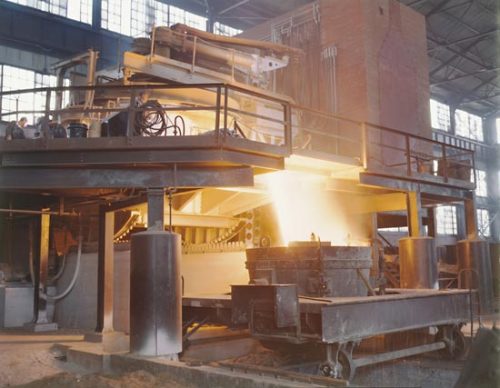
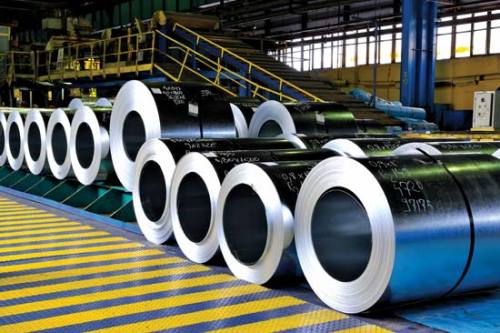


Alloys: Steel
According to Dictionary.com, steel is “any of various modified forms of iron, artificially produced, having a carbon content less than that of pig iron and more than that of wrought iron, and having qualities of hardness, elasticity, and strength varying according to composition and heat treatment: generally categorized as having a high, medium, or low-carbon content”.
Perhaps the most well known alloy around, as well as one of the most common materials in the world, steel is essentially iron with a small percentage of carbon (and, on occasion, one or more other elements). Not enough carbon and you’re stuck with wrought iron, too much carbon and you get cast iron. The graph above is a binary iron-carbon phase diagram that goes from zero percent carbon to about 6.5 percent, illustrating the various phases that can form.
Steel has been known about since ancient times, some pieces dating back to 1800 BC, but it was the invention of the Bessemer process during the industrial revolution that really popularized the alloy. (Technically, similar methods had been used before, particularly in China and Japan, but Henry Bessemer invented the modern method, industrializing it and obtaining a patent in 1856.)
Mainly used in construction, the alloy has been used for almost every possible application: from office furniture to steel wool, from bulldozers to washing machines, and from wires to watches, the possibilities are pretty much endless. Steel is also one of the world’s most-recycled materials, able to be used more than once, with a recycling rate of over 60% globally.
The addition of carbon allows the steel to be stronger than the iron it’s made from. Adding nickel and manganese increases its tensile strength, chromium increases hardness and melting temperature, and vanadium also increases hardness while making it less prone to metal fatigue. Stainless steel has at least eleven percent chromium, whereas Hadfield steel (which resists wearing) contains twelve to fourteen percent manganese. Check out these links for more information on the effects of adding certain elements.
Sources: 1 (top images), 2 (bottom images)




The great esGape
Unlike most elemental metals, gallium will melt in the palm of your hand, or at temperatures above about 30 °C. And that’s not the only unusual thing about this element: It also expands when it freezes. In this video series, warm liquid gallium is poured into a glass vial (top), followed by a little clean-up. As the gallium cools back down to room temperature, it starts to bubble up as its volume expands (third video down). Overall, it expands 3%, shattering the vial (bottom). Water is a substance commonly used to demonstrate this sort of expansion, growing about 8% in volume when frozen, but other elements exhibit this behavior as well, including silicon and plutonium. The final two clips have been accelerated 200 times and 10 times, respectively.
Credit: Periodictable.ru (watch the whole video here; GIFs created by rudescience)
More ChemPics and C&EN stories:
Liquid metals take shape
A melting liquid
Rolling out liquid-metal motors
